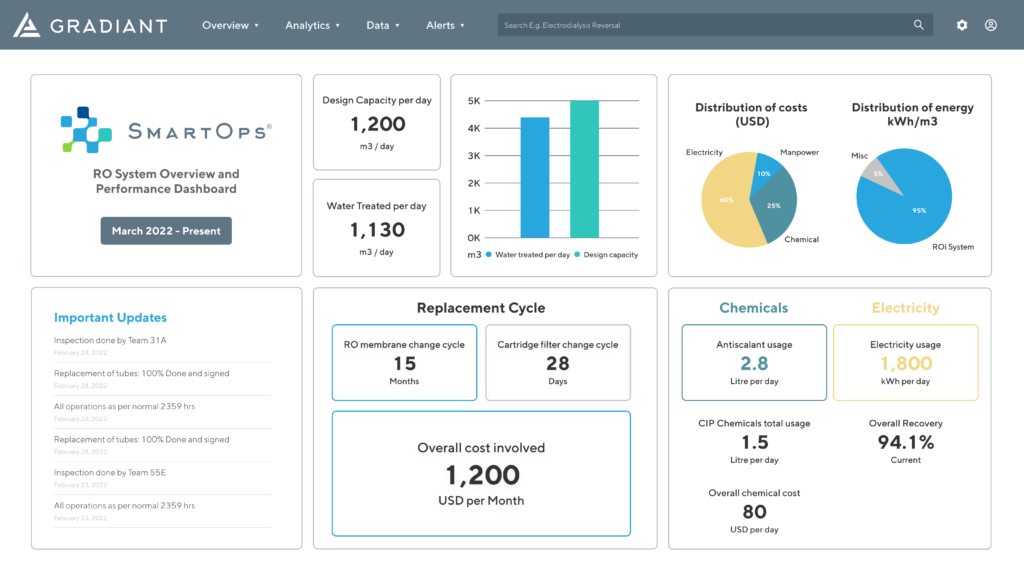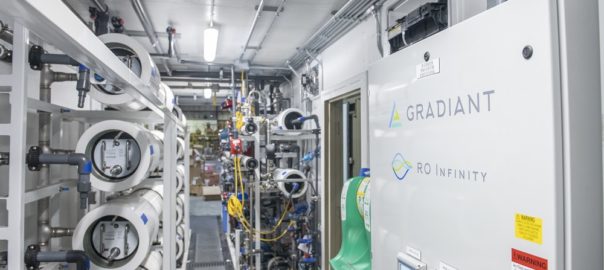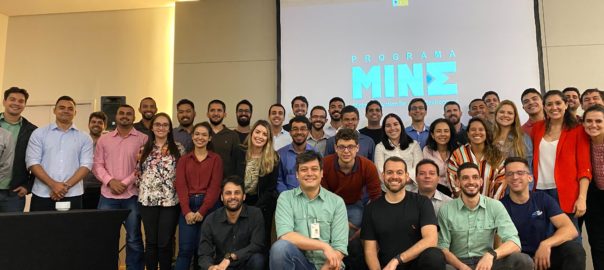There are plenty of mining applications one can see Boston, Massachusetts-based Gradiant’s end-to-end water technology solutions serving.
A spinout of the Massachusetts Institute of Technology, the company calls itself the “experts” of industrial water, water reuse, minimum liquid discharge (MLD) and zero liquid discharge (ZLD), and resource recovery of metals and minerals.
That is a big remit, hence the reason why it caters to at least nine industries on a global basis in mission-critical water operations, with over 70% of its clients being Fortune 100 companies in the world’s essential industries.
Mining companies have historically been wary of suppliers that serve a variety of industries, believing their needs rarely cross over with the requirements of other industries. Gradiant believes it is different in that its solutions incorporate not only the hardware and software to fine-tune water technologies, but also the artificial intelligence (AI) to ensure the tools being used are effective regardless of the inputs.
This includes the RO Infinity™ (ROI™) platform of membrane-based solutions for complex water and wastewater challenges, which combine Gradiant’s patented counterflow reverse osmosis (CFRO) technology with reverse osmosis and low-pressure membrane processes. ROI solutions enable customers around the world to achieve sustainability goals to reduce their water and carbon footprint, the company says.
This platform is complemented with AI-backed SmartOps™, an integrated digital platform for asset performance management to optimise and predict plant operations using historical and real-time process data, resulting in performance and cost efficiencies.
Prakash Govindan, Co-Founder and COO of the company, says most water solutions on the market are built for consistent liquid/solid feeds and work effectively when the input is in accordance with these specifications. When the feed changes, they often become ineffective, needing to be updated or changed out, which costs money and impacts the various processes on either side of the water treatment section.
“The machine-learning algorithms we use – neural networks and time-series algorithms – ensure we consistently optimise the operation of our solutions,” Govindan told IM. “These tools make sure we always use the right performance metrics and don’t lose efficiency in the face of variability.”
The algorithms cannot change the hardware built into the water treatment plant, but it can, for instance, change the speed of the pumps or blowers. “We call it balancing, which is all part of our IP portfolio,” Govindan said.

For mining companies looking to employ water treatment tools at their operations, this results in Gradiant’s technology being able to concentrate metals to a higher degree than any other solution on the market, according to Govindan.
“We can concentrate an aqueous solution to the point where you can produce a solid material that miners can then process,” he said.
Considering desalination applications represent a significant portion of the company’s work to this point – through its CFRO process – the mining sector has already provided some wins.
The CFRO process enables remote inland desalination and water reuse that was not previously possible due to a lack of viable brine management solutions, according to Gradiant, concentrating brines to saturation for disposal or crystallisation while producing a purified product water stream for beneficial reuse.
One significant nickel miner in Australia with a brine stream is using this solution to recover large amounts of concentrate it can feed through to its captive processing plant to produce an end-use product.
“Gradiant’s technologies enable clients to recover more than 50% of the nickel and cobalt from leached brine – this stream would have otherwise been wasted without our solutions,” Gradiant said. “Overall, this was a client benefit of about 20% increase in nickel and cobalt production across the entire operation.”
When considered together with the energy savings (75%), freshwater savings (25%) and environmental benefits, Gradiant continues to see high interest from miners around the world to adopt its solutions, it says.
That is before even factoring in the other complementary benefits that come with using SmartOps.
“All our products benefit from in-built sensors that not only allow us to update the operating parameters based on the detected materials, but also carry out scheduled maintenance on the hardware using these algorithms,” Govindan said. “This allows us to carry out 30-40% less service intervals than many conventional suppliers as we only take the solution out of operation based on what the data is telling us.
“Not only this, but we also have complete oversight of these parameters from remote locations, meaning you can monitor the systems from remote operating centres and not remain on site after installation.”
With mines getting more remote and hiring local employees getting even harder with the well-documented skills shortages, Gradiant feels its solutions will continue to win miners over.









